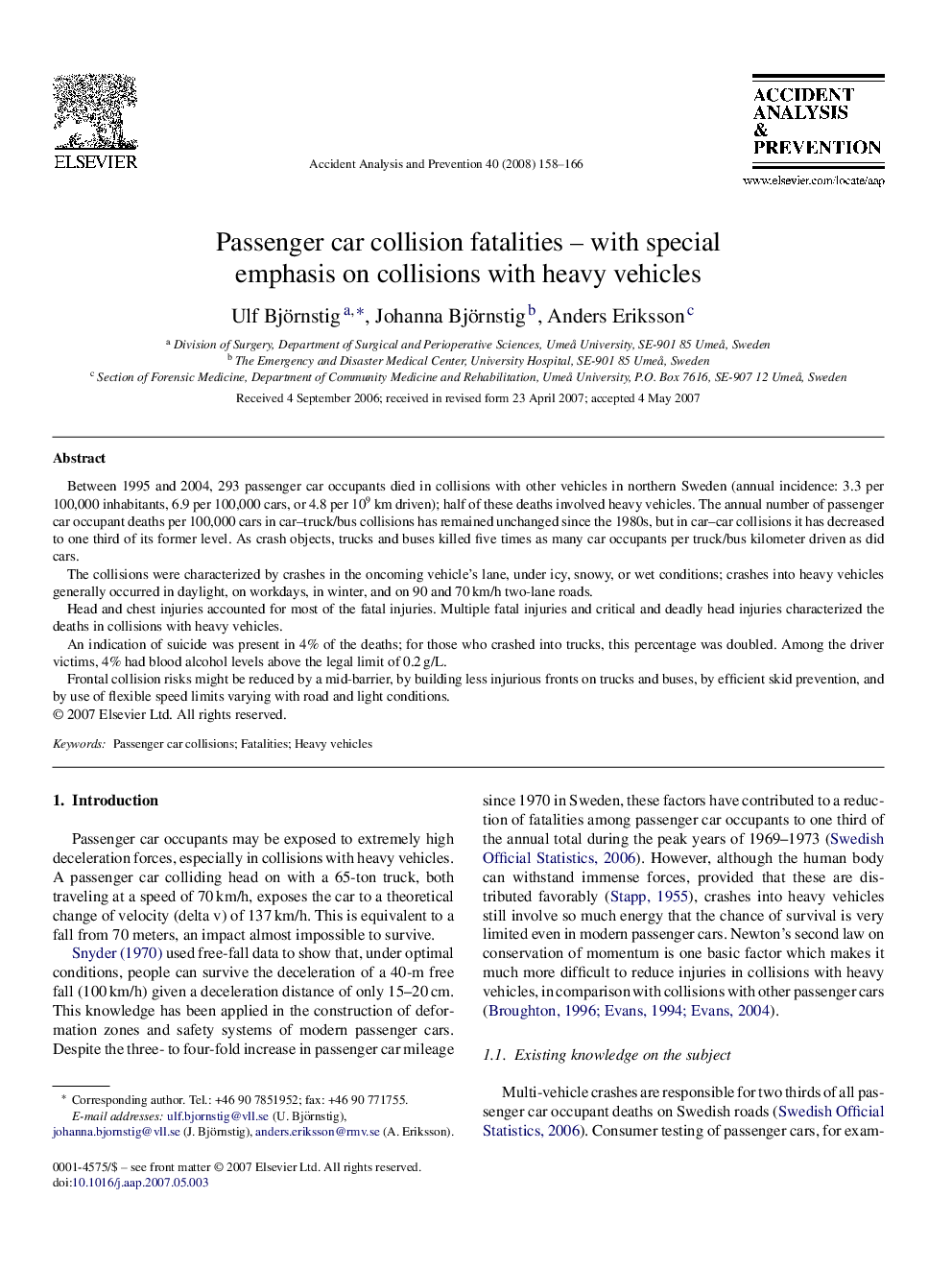| Article ID | Journal | Published Year | Pages | File Type |
|---|---|---|---|---|
| 573654 | Accident Analysis & Prevention | 2008 | 9 Pages |
Between 1995 and 2004, 293 passenger car occupants died in collisions with other vehicles in northern Sweden (annual incidence: 3.3 per 100,000 inhabitants, 6.9 per 100,000 cars, or 4.8 per 109 km driven); half of these deaths involved heavy vehicles. The annual number of passenger car occupant deaths per 100,000 cars in car–truck/bus collisions has remained unchanged since the 1980s, but in car–car collisions it has decreased to one third of its former level. As crash objects, trucks and buses killed five times as many car occupants per truck/bus kilometer driven as did cars.The collisions were characterized by crashes in the oncoming vehicle's lane, under icy, snowy, or wet conditions; crashes into heavy vehicles generally occurred in daylight, on workdays, in winter, and on 90 and 70 km/h two-lane roads.Head and chest injuries accounted for most of the fatal injuries. Multiple fatal injuries and critical and deadly head injuries characterized the deaths in collisions with heavy vehicles.An indication of suicide was present in 4% of the deaths; for those who crashed into trucks, this percentage was doubled. Among the driver victims, 4% had blood alcohol levels above the legal limit of 0.2 g/L.Frontal collision risks might be reduced by a mid-barrier, by building less injurious fronts on trucks and buses, by efficient skid prevention, and by use of flexible speed limits varying with road and light conditions.
